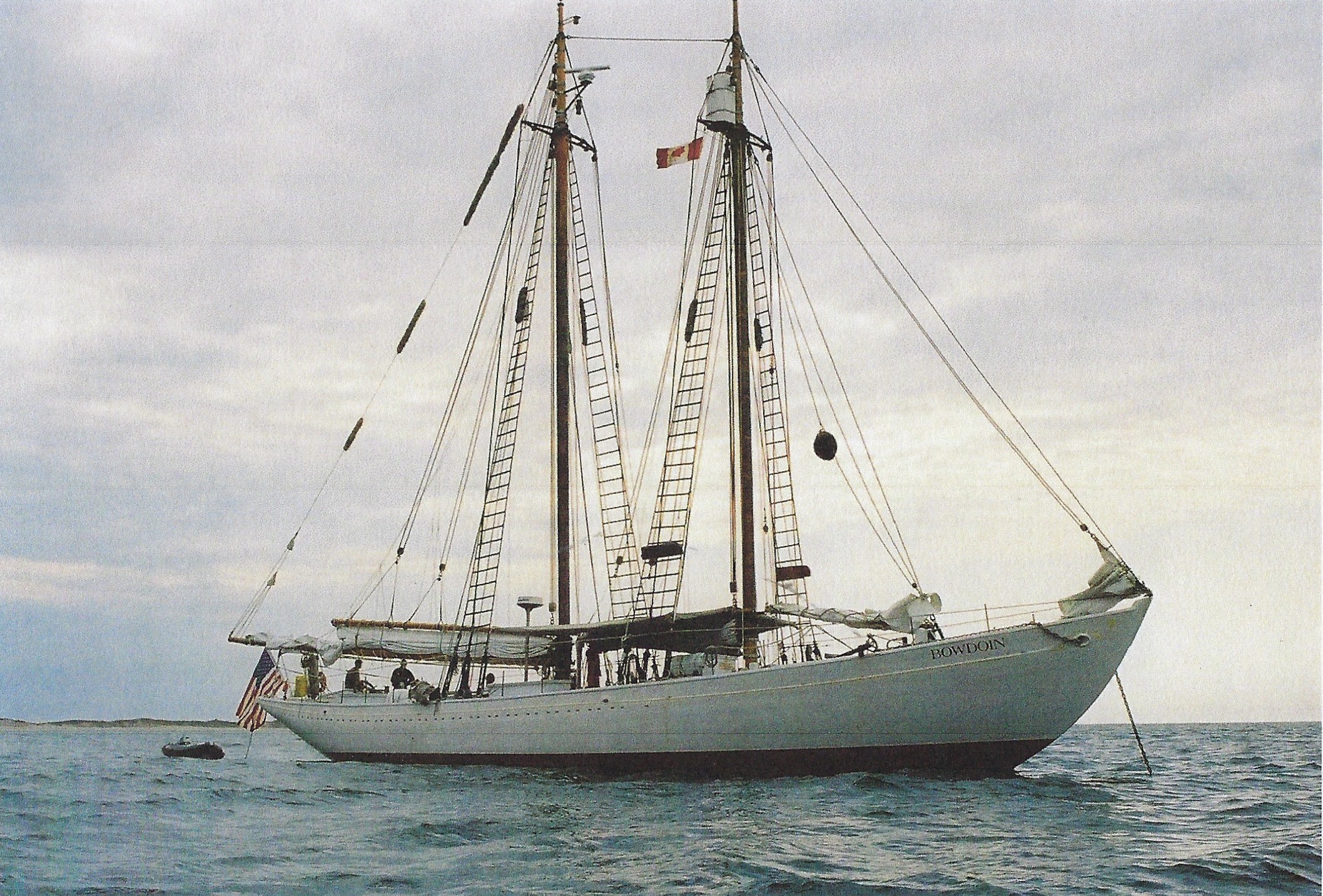Theta News-1936-60 North Latitude
By Mike Raymond, Zeta-Upsilon (Miami University (OH))
I find reading magazines from my collection of Theta News sometimes very surprising. Recently, I came across an unusual article from the 1936 winter issue of the magazine. The article was entitled “60 North Latitude” and it dealt with the 1933-34 MacMillan Arctic Expedition.
DONALD BAXTER MACMILLAN
MacMillan was a famous explorer, an expert on Viking settlements and Inuit life style, and a respected sailor. He was also a pioneer in using electricity, radio, and airplanes as he explored the Arctic region. Later in life he became a popular lecturer. Most of his lectures featured movies and photographs of his many expeditions. His career as an explorer spanned over five decades.
After a short career as a teacher of geology at Worchester Academy, he caught the eye of the famous explorer Robert E. Perry. MacMillan assisted Perry on his 1908 polar expedition. This would be MacMillan’s first of over thirty trips to the Arctic Circle.
In 1921, MacMillan bought The Bowdoin, a schooner that he designed specifically for sailing in icy waters. It was aboard this ship that crewman Dan Mix first used a wireless radio to communicate with the outside world from the Arctic Circle.

The ship had a great record of service that included narrow misses with icebergs and war time service as a Naval Reserve ship. The Bowdoin is now registered as a National Historic Landmark and serves as a training vessel at the Maine Maritime Academy.
In 1923, MacMillan lead the Bowdoin-MacMillan Expedition to study the possibility of climate change in the far north. This expedition was fully sponsored by The National Geographic Society. He served in both world wars as a naval officer and achieved the rank of Rear Admiral.
Donald Baxter MacMillan made his final voyage to the Arctic Circle in 1957 at the remarkable age of 82. During his life time he received numerous awards such as the Bowdoin Prize and from the Boy Scouts of America the Honorary Scout Award.
More information about the exploits of MacMillan can be found on various web sites, including the Perry-MacMillan Museum site.
GEORGE CROSBY
Was Donald Baxter MacMillan a member of Theta Kappa Nu Fraternity? The answer to that question is no! Just what is the connection between this renowned explorer and Theta Kappa Nu? The answer to that question is George Crosby.

Crosby became a member of TKN at Massachusetts Alpha (Colby College) in 1931. He transferred to Maine Alpha (Clark University) in 1933. He was very active on campus and was elected as the Archon (President) of his chapter.
While at Clark University, he took a great interest in photography. His ability as a photographer came to the attention of Dr. David Potter of Clark University. Dr. Potter asked Crosby to join the Bowdoin-MacMillan Arctic Expedition as its photographer. Crosby, after some anxiety about the potential dangers of such a voyage, agreed to join the expedition.
The article is much like a travelogue. He describes his journey aboard the Bowdoin as he travelled from Portland, Maine to Cape Mugford and back. Life aboard the Bowdoin was routine and composed of daily work duties, like polishing the brass fittings and splicing rope, with long periods of reading, talking, and playing cards. He reported that the Bowdoin sailed from one “dismal settlement” to another as it made it way north through storms and crossing by the occasional iceberg.
One of the highlights of the voyage was a stop at Hopewell. Hopewell was the site of an actual Inuit (Eskimo) village. Crosby compared the neat white buildings of the Mission school and the Hudson Bay Company with the “…squalid board huts of the natives”. Crosby engaged in trading with the natives and eventually got what he wanted most – a fur parka. The parka cost him a shirt, a suit of long underwear, a pair of pants, and a pair of socks. A bargain for certain! Other items that Crosby bought as souvenirs, such as snowshoes and bear and seal skins, were cheap in comparison.
Upon his return to Portland, Crosby wrote of his memories of a “…wonderful summer eating seal meat, caribou, ptarmigan, puffin, guillemots, elder ducks, and razor-billed auks…”. He also wrote that his hands were calloused, his beard long, and that he was willing to do it all again!
The connection between Donald Baxter MacMillan and George Crosby was the hundreds of photographs that Crosby took during the expedition. The connection was strengthened by the 200 prepared bird skins and the 20,000 plant specimens that were gathered during the journey. Many of the photographs are now part of a collection held by the Perry-MacMillan archives at Bowdoin College.
Never miss a post! Subscribe to the C&C email list by clicking here.


